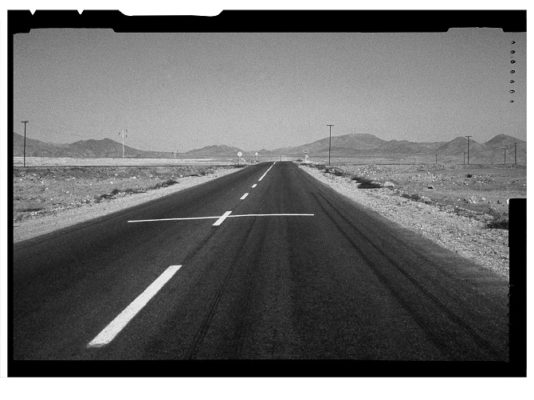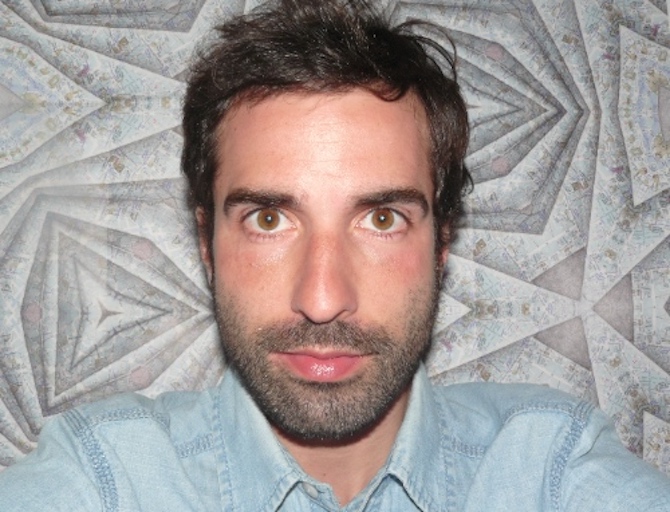Search
To search for an exact match, type the word or phrase you want in quotation marks.
A*DESK has been offering since 2002 contents about criticism and contemporary art. A*DESK has become consolidated thanks to all those who have believed in the project, all those who have followed us, debating, participating and collaborating. Many people have collaborated with A*DESK, and continue to do so. Their efforts, knowledge and belief in the project are what make it grow internationally. At A*DESK we have also generated work for over one hundred professionals in culture, from small collaborations with reviews and classes, to more prolonged and intense collaborations.
At A*DESK we believe in the need for free and universal access to culture and knowledge. We want to carry on being independent, remaining open to more ideas and opinions. If you believe in A*DESK, we need your backing to be able to continue. You can now participate in the project by supporting it. You can choose how much you want to contribute to the project.
You can decide how much you want to bring to the project.

“American Residues is, therefore, a residual work, elaborated in the synthesis of an appearance of concrete life and a kind of art that, from Latin America, pursues evidence, and as a consequence, the re-formulation of reality operating with the daily elements that conform it.”
C.A.D.A., “American Residues”, In/Out four projects by Chilean artists, pag.2–3
A Chile under dictatorship, over and above liberties, between censorship, and through an economic crisis. The eighties passed through the country like a hungry condor. A supposedly clean siege: Pinochet instigated the “Operation clean and cut”; death, torture, prison for suspects, sackings in universities, the burning of books, censorship, the whitewashing of walls and street haircuts of the left, undertaken by soldiers converted into hairdressers. This is how Gustavo Leigh defined it: “The task of the government consists in extirpating the Marxist cancer that threatens the organic life of the nation, applying extreme measures, taken to the ultimate consequences”. The cultural counsellor of the Junta de Gobierno explained their mission: “Extirpate at the root, and forever, the foci of infection that developed, and could develop, on the moral fabric of our patria.”
But something escaped the soap and the shaving. Various works of art that stemmed from the margins, talked of the margin, and spread the margin. The artistic panorama at the beginnings of the 80s was divided between the Escena de Avanzada (the basic nucleus of which was made up of Carlos Leppe, Carlos Altamirano, Juan Dávila and Nelly Richard); the trident composed of Eugenio Dittborn, Catalina Parra and Ronald Kay; the collective C.A.D.A. (Diamela Eltit, Raúl Zurita, Lotty Rosenfeld, Juan Castillo and Fernando Balcells), and a less cohesive group of artists but with great political and social interest, associated with the Taller de Artes Visuales (TAV); Francisco Brugnoli, Virginia Errázuriz, Luz Donoso, Pedro Millar and Elías Adasme. The large majority of the works and artistic actions of these years are precarious in relation to their production costs and investment in materials, but they have a high political and social content. The “Investigación sobre el Eriazo” (Valparaíso, 1980), by Juan Castillo, is one of the first: the street writing of the phrase “Indicating our margins, working on the Eriazo” talked about abandoned space, as a national metaphor. Just as the poet Enrique Lihn did with his letters: I never left horrible Chile / my travels that are not imaginary/ tardy yes -moments of a moment-/ they didn’t uproot me from the eriazo (barren land)/ remote and presumptuous (“A partir de Manhattan”, 1979). Indeed, Castillo, along with Ximena Prieto, formed an interesting artistic duo at the beginning of the eighties called “Al Margen”.
In this context of abandonment is situated the action of Diamela Eltit, “Zonas de dolor”, realised in a brothel in the Maipú street of Santiago. It consisted in the reading of some texts and the action of washing the pavement in front of the brothel: once again the cleaning operation, expressed through the impossibility of washing away guilt in a country that sold its body (another of her actions consisted in kissing a tramp, a show of love in the margins). “Huincha sin fin” (1980), by Luz Donoso, is a tape made up of photographs of the victims of the dictatorship, a measure incapable of containing the deaths caused by the military regime. Donoso was one of those brave artists who defended the role of art as a space of revolt, like Elías Adasme, who risked his life with his work “El arte debe ser ineludible”, also in the 80s. Adasme travelled through one of the main streets of the city, distributing photographs, and giving a reading of a manifesto that pointed to art as a means of acting upon reality, through assault. He was interrupted by soldiers, who didn’t really know what to do with him [[“In this case, the appeal to the condition of art was fundamental in foxing the police regarding the background of the intervention.” in Alejandro de la Fuente y Diego Maureira, “Arte y acción política: intervenciones urbanas en los periodos de dictadura y democracia en Chile”, Ensayo sobre artes visuales, LOM Ediciones/Centro Cultural de la Moneda, Chile, 2016.]].
“Dal Cile sul Cile”, was the article published by Nelly Richard in the magazine Domus (no. 616, April 1981), it being the first time that these artistic practices hit the heights. In it, the theorist analysed works by Eugenio Dittborn, Carlos Leppe and Carlos Altamirano. Richard was the godmother–and for some, the creator, of the Escena de Avanzada, artists who resisted censorship and prohibition through the encoding of the message. The marginal adjective is left on the margins, when we talk of initiatives that establish themselves on the international level as an academic and conceptual language[[The theorist Pablo Oyarzún talks of a “Scenario of withdrawal, of retreat”. Rather than a “Escena de Avanzada” (Scenario of advancement), In “Imagen y Duelo”, MERIDIONAL Revista Chilena de Estudios Latinoamericanos, Number 6, April 2016, 203-212.]]. The chaotic, foul-smelling and striking performance by Carlos Leppe, “Mambo número ocho de Pérez Prado”, in which dressed as a transvestite, he danced, stripped, screamed and vomited in a bathroom wasn’t let’s say a very academic action. But it took place in a hegemonic context: la 12th Paris Biennale. The curator of the Chilean consignment was, once again, Nelly Richard, who a year later wrote: “The language that our practices work with is in itself this battlefield, this emergency zone of meaning that goes against its regimes of dominance” [[“Arte y textos: Envío a la 5ª Bienal de Sydney. Gonzalo Díaz/Eugenio Dittborn/Nelly Richard/Justo Pastor Mellado/Adriana Valdés/Gonzalo Muñoz”. (Santiago: Ediciones de la Galería Sur, 20, 21, 22 y 23 December 1983).]]. Battle, emergency, attack. Published to contextualise the sending of works by Gonzalo Díaz and Eugenio Dittborn to the Sydney Biennale. Two artists whose intellectual weight is proportional to that of their curriculum in biennales and large exhibitions, as is that of Nelly Richard. Elements to bear in mind to understand of the peak theoretical works of this decade: “Márgenes e institución”, a text that explained, amongst other things, an affront against museumification, monumentalization and collecting[[“The same preference manifested for the “advanced” towards structures of works that…reject the temptation of the immutability against time of the collections accounts for the outbreak of the new live temporality that opposes the transcendent humanism refuged in the historical glory of the monument…the ephemerality of its poetics of its event.” Nelly Richard, “Márgenes e institución, arte en Chile desde 1973”. Santiago: Francisco Zegers editor, 1986, p. 162. In a conversation with Richard, in March 2017, the theorist, in reference to this issue, stated: The 20th century showed us that the avant-garde and neo-avant-garde all end up being assimilated by the academy and the museums however much they have characterised a gesture of anti-institutional rupture. In turn the 21st century and its “archival fever” (Suely Rolnick) have turned into a museum object the documentation of the works that compete with and at times replaces the work transcurso vivo cuando se trata de performances or urban interventions… There is no way of avoiding the translation-reconversion of the “event” of the work into a system of inscription (academia, museums, collecting, etc.) that replaces the procedural dynamic of live art for references available for research and re-readings of the past become a museum object..]].
Chilean art of the eighties, in its time, had a more than relative local repercussion. And it has not been until recently that they have been vindicated, thanks to the mediation of foreign institutions of prestige and power. That is to say, the photographs that Elías Adasme gave away in his action, corresponded to his work “A Chile”, in which he appeared with a map of Chile on his spinal column, were purchased, in 2013, by the Museo Reina Sofía. The action of drawing crosses on the pavement, repeated on various occasions by Lotty Rosenfeld (for example in the Atacama desert in 1981), was taken to dOCUMENTA and, in a slightly reworked, to the last Venice Biennale. The airmail paintings by Eugenio Dittborn, like “To Hang Airmail Painting No.5” (1984), rest in the storerooms of the Tate and MoMA. The ground-breaking literature of the up until now accursed Juan Luis Martínez (“La nueva novela”, 1985), has also been acquired by MoMA, whose Latin American council, moreover, is analysing the possibility of acquiring some of his poetic objects (as well as works by Pedro Millar, amongst others). The photographs of prostitutes, the insane, transvestites and boxers by Paz Errázuriz, like the series “Adam’s appel” (1983), were awarded prizes in the Festival of Photoespaña of 2015 and bought by the Tate Gallery. The same museum also acquired the photograph “Las dos fridas”, one of the iconic works by the Yeguas del Apocalipsis, from 1989. Aside from mentioning the Chilean artists exiled in New York, who exhibited more abroad than within their country of origin (for example in 1981 MoMA exhibited Alfredo Jaar, with his “Opus/Andante Desesperato”, Juan Downey, with “The Looking Glass”, and Cecilia Vicuña). The researcher Dimarco Carrasco, resume how this marginal imaginary has become institutional through its academization: “Diamela Eltit, has his whole personal archive, even the bus tickets, at Stanford University. From what perspective do we read now the actions he did, such as the kissing of the tramp?” [[A conversation held in 2017 with the researcher and author of the essay “Prácticas artísticas y activismo proto-queer: Juan Dávila, Carlos Leppe, Yeguas del Apocalipsis y el Che de los gays”, Ensayo sobre artes visuales, LOM Ediciones/Centro Cultural de la Moneda, Chile, 2016.]].
In the case of C.A.D.A., the battle for the ownership of its archive is significant: from the acquisition announced by the Museo Reina Sofía (of “unique” pieces), that was replicated by the Museo Nacional de Bellas Artes of Chile, in addition, moreover, to the donation of another part of the archive, to the Museum of Memory and Human Rights. Other works are in the holdings of MoMA (like the action “Ay Sudamérica”, from 1981). Today everybody wants a bit of C.A.D.A. Where did all their American residues end up? I’m referring to the work they showed in 1983 at the Washington Project for the Arts. A box of second-hand clothing, stemming from the United States that was returned to its country of origin. Through how many hands has this clothing passed? From the margins? Works of revolt, or “return”?

His intention is to continue to improve his writing of art criticism; everything else is enjoying and learning from contemporary proposals, establishing other strategies of relations, either as a contributor to magazines, editor of a review, curator or lecturer. As a backpacking art critic, he has shared moments with artists from Central America, Mexico and Chile. And the list will continue. Combating self-interested art, applauding interesting art.
"A desk is a dangerous place from which to watch the world" (John Le Carré)